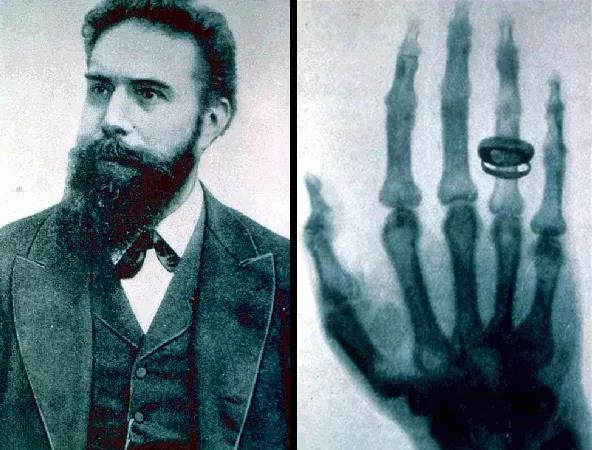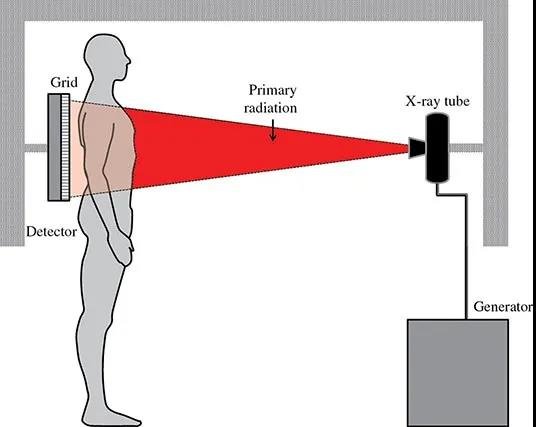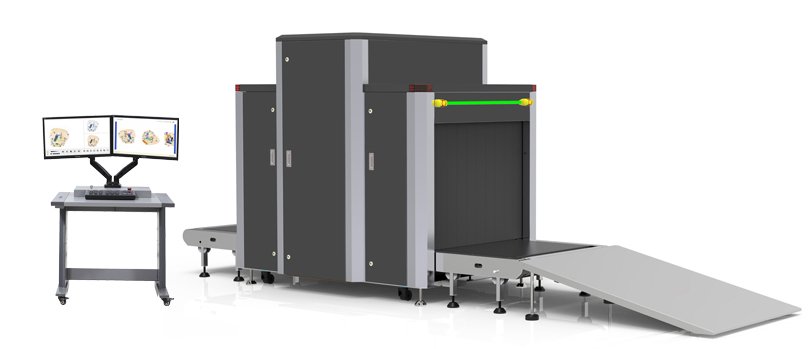X-rays were discovered in 1895 by Roentgen, a German physics professor working in the laboratory of the Institute of Physics of the University of Würzburg. Because of this discovery, he won the first Nobel Prize in Physics (1901). The picture below shows a "beautiful picture" of his wife's right hand. Roentgen gave a speech at the Würzburg Society of Physical Medicine on January 23, 1896, announcing that X-rays could pass through the flesh of the hand, but were absorbed by bones and metal rings. This interesting property of X-rays (penetrating skin/muscles better than bones) means that they are immediately put into use by the medical community, which also ushered in the rapid development of radiology.

What is X-ray?
X-ray is an electromagnetic wave with a very short wavelength. The wavelength of X-ray used in photon diagnosis is 0.08~0.31 angstroms (1 angstrom = 0.1 nanometers). Among them, superhard X-rays with a wavelength less than 0.1 angstroms, hard X-rays within the range of 0.1 to 1 angstroms, and soft X-rays within the range of 1-10 angstroms.

What are the hazards of X-rays?
In Europe more than a hundred years ago, a weird incident happened. Many people invariably suffered from fatigue, fatigue, oral ulceration, hair loss, and other symptoms, and eventually died of "incurable diseases" such as skin cancer and oral cancer. People began to collect clues to find out the cause of the disease and eventually discovered that they had been frequently exposed to X-rays; another incident occurred in the United States. In 1956, the American Academy of Orthopaedic Surgeons promoted the importance of correct standing posture to bone development. Straightness is the standard of beauty, and as a competition event, the girls are exposed to X-rays many times and eventually suffer from various diseases.
The protection of ionizing radiation must comply with the following basic requirements: one is the legitimacy of practice, the other is the limit of dose and potential exposure hazards, the third is the optimization of protection and safety, and the fourth is the limit of dose and potential exposure hazards.
When choosing inspection items, try to choose inspection items with small radiation: under the guidance of professional doctors, low-dose techniques are not required for high-dose techniques; routine physical examinations should be performed with low-dose CT screening as far as possible and not done in a short time. Meaningless repetitive X-ray examination.
What can X-rays help us?
1. X-ray diagnosis
X-rays are used in medical diagnosis, mainly based on X-ray penetration, differential absorption, photosensitivity, and fluorescence. Since X-rays are absorbed in different degrees when passing through the human body, for example, the amount of X-rays absorbed by bones is more than that of muscles, so the amount of X-rays passing through the human body is different so that the density distribution of various parts of the human body is portable Information, the intensity of the fluorescence or sensitization caused on the fluorescent screen or on the photographic film is quite different, so the fluorescent screen or on the photographic film (after development and fixation) will show shadows of different densities. According to the contrast of shades, combined with clinical manifestations, laboratory results, and pathological diagnosis, it can be judged whether a certain part of the human body is normal. As a result, X-ray diagnostic technology has become the world's first non-traumatic visceral inspection technology.

2. X-ray treatment
X-rays are used in treatment, mainly based on their biological effects. When X-rays of different energies are used to irradiate the cells and tissues of human lesions, the irradiated cells and tissues can be destroyed or inhibited, so as to achieve certain diseases, especially It is the purpose of tumor treatment.

3. X-ray baggage security scan
The baggage scanner offers advanced new 7 color imaging technology, shows images in 7 colors, enables users to achieve optimal material identification by allowing them to view screened objects in 7 colors, each colors correcting to a specific range of Atomic Z-number.

X-ray past and present-Safeagle
Fill out more information, We will get back to you within 24 hours.
4F.,Bldg. B, Jin Hao Pioneer Park, No.9 Dafu Industrial Zone, Aobei Community, Guanlan St., Longhua Dist., Shenzhen, R.P.China
Sales@Safeagle.com
Telephone : 86-0755-82373580
Business Phone : 86-0755-82373580
Work Time :9:00-18:30(Beijing time)